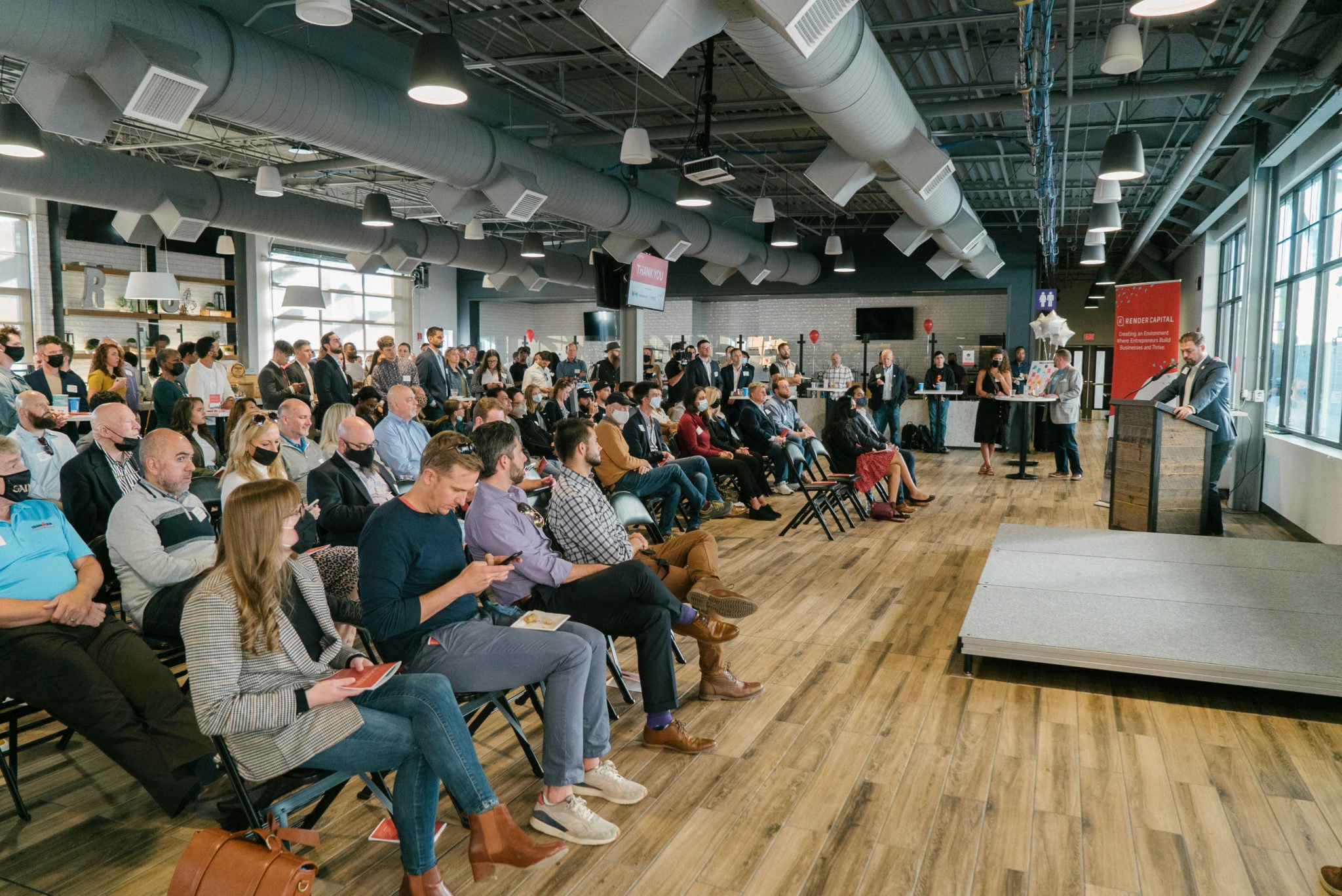Community Development Collaboration
In many communities today, it is still increasingly difficult for individuals to start a successful business. Most entrepreneurs (81% – according to the latest data from the Kauffman Foundation) require some degree of alternative finance – they rely on their own savings and credit, turn to family and friends, and work to create early sales through their various relationships. However, with community banking down 50% since the recession of 2008, and the undeniable gap in family wealth (the average white family has $100,000 in net worth while the average family of color has $8,600), creative solutions are needed in order to support these entrepreneurs and to build more thriving communities. But where do these creative solutions come from?
Understandably, when we hear statistics like these and see graphs like the one below, we tend to respond in more frenetic ways – we tend to close ranks and hunker down. As investors, community advocates, entrepreneur support organizations, and
development groups, we work everyday to figure out ways to better support businesses. In our work at Access Ventures we have found that traditional “problem solving” tends to generate a mindset focused on problems which can lead to a mental position of scarcity – the proverbial, “glass is half empty.” Although well intentioned, it actually can stifle creativity and limit our responses.
In order to design for change, it’s helpful to employ appreciative inquiry as an approach and shift your focus from “what’s wrong” to “what’s strong. ” It supports an abundance mentality that is the only way to truly design for change. Scarcity creates anxiety and inevitably restricts the ways we might creatively imagine a different solution. A scarcity mentality looks at problems, whereas an abundance mentality assumes opportunity. Appreciative inquiry and designing for change gets beyond identification and analysis and truly leverages the best of one’s team to imagine and deploy innovative approaches. Over the past four years, we have refined this approach into these three steps borrowed from many great pioneers, such as the d.school at Stanford and the teams at IDEO.
1. Designing for change is human-centered.
We do not treat the concept of “human-centered design” as merely an aspiration, but place humans at the very center of all of our work. It is what motivates us to understand context and cultures. A process developed by the Stanford d.school, the goal is to empathize and then develop solutions. Our starting point is to assume that nothing is universal and that every community is a complex living organism. It is important to remind one another, we design solutions and services for humans, not humans for solutions. By focusing on the human experience, we can truly build – or rebuild – that appropriate solution.
2. Designing for change is always discovery and problem-making first before getting to solutions.
We surface questions; understand the players; and identify gaps. We work to apply a wider view to ensure that we don’t miss anything—but not simply for the purpose of observation. Our objective is always to come to a solution. We first redefine problems, then we imagine, design, and create solutions at hopefully all levels. By challenging the status quo, we better understand the problems that most need to be solved—and solve them creatively.
3. Designing for change is about breaking the boundaries of established disciplines.
To understand the complex nature of our community’s challenges, we need to combine existing, traditional disciplines and invent new ones. Access Ventures works to leverage our team and process to identify gaps and develop new approaches that require first-mover risk capital. The role this requires, is one of a “beta-tester” that is willing to prove examples that have potential but no certainty of success. In many communities, funders want proven, seemingly “off-the-shelf” solutions. Yet, many of the challenges communities face, demand new, untested, unverified solutions.
It’s important more community partners and funders step up and commit to play this vital role for more creative and collaborative strategies to be designed and deployed. Many things need to be changed for these processes to be more commonplace (such as the manner in which investors source and fund solutions). No one solution works in every context and at all times. Variables in every community change that require adjustments in our approaches and if we continue to limit abilities to design tailored solutions to respond to these changes, we will find ourselves constantly anxious and behind.



